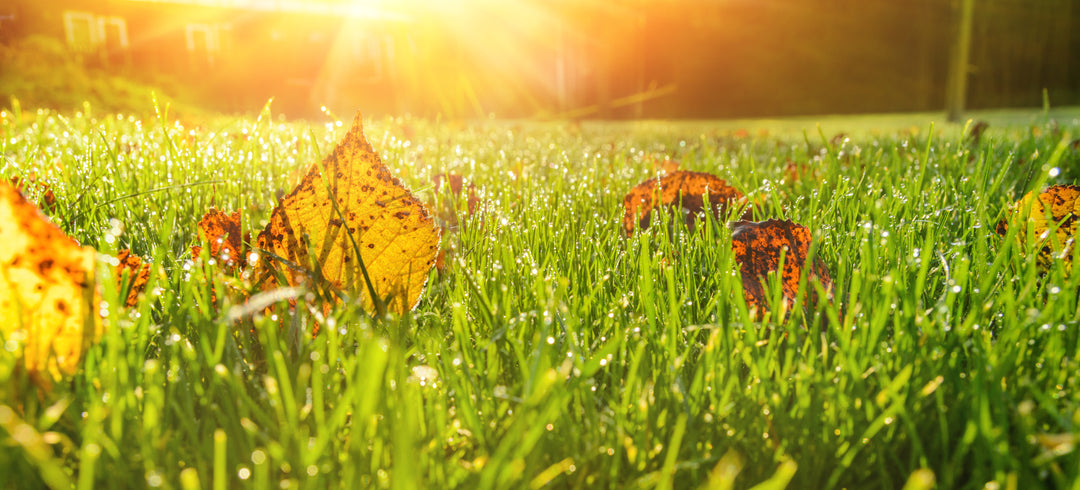The lawn and the impact on the environment
First extensive grassy areas were created on this earth about 15 million years ago. When people were sewing, they preferably use clear and fruitful grassavanes for settlements and agriculture. This love for the grass has preserved man until today. The Savannah has received itself in the form of lawns in the ever-increasing settlements of humans.
What a lawn is exactly
The duden defines the lawn as
"Tightly with the dated and short-held grass covered area (especially in gardens, parks, sports facilities)".
Lawn as we know him today, has always been created for a specific purpose. He serves as a pleasure for the eye, design element in elaborate gardens, open space for human use in parks and the domestic garden or he is a sports and playing field.
The golfer loves their perfectly trimmed lawn as well as footballers or riders. Children play and great loving on the dense green and stressed big city people enjoy a break in the park around the corner at noon.
The sight of generous green areas relaxes the eye. Green is perceived by many people as harmonious and balancing. Researchers found that alone the view of a wide grassland can significantly reduce the stress levels of a person.
Another official definition feature of lawn is that he is not used for agriculture. He is only available to leisure pleasure or the pleasure of beauty of the people. Artificially created grasslands are called "anthropogenic" cultural landscape. These include all landscape forms that have arisen through the use and influence of man.
Criticism of lawn
Oversely environmentalists see an artificially designed work of people without any ecological use in bright green lawns.
The monoculture of the grasses as well as the removal of wild herbs are criticized. Due to the regular backward on a few centimeters in length, the grasses can not come to the flowering. Allegedly, the ecological benefits of a lawn would be equal to zero. But these people are mistaken. Even one-sided planted and constantly reduced green areas act as green lungs in urban regions and can still be much more!
These reviews forget another important aspect. In many places where rases are growing today, alternatively sealed artificial areas such as concrete, patch or asphalt would be located. For game and sports are also hardly suitable for wildflowers. Blooming wild herbs are beautiful, nevertheless carefree children and nectar-picking honeybees do not quite fit together.

© Sharaku1216 - Stock.adobe.com
Lawn is good for the environment and the people
Most people are not aware that even a perfectly trimmed English lawn is a perfectly functioning ecosystem. Even in the shortest grass and under the earth's surface, tiny insects and millions of microorganisms live. Grass surfaces let the floor breathe and contribute significantly to a pleasant climate.
Lawn as a valuable oxygen producer
Even constantly abridged grasses operate incessantly photosynthesis. They take our consumed breathing air and convert carbon dioxide into valuable oxygen. Only 250 square meters of lawn rich to supply four people with oxygen for a whole day. Within cities, lawns and parks are an important ecological climate zone.
Lawn can contribute to temperature compensation
Lawn surfaces can store a lot of moisture in a significant extent. Part of this moisture, which slats the grasses in the morning by dew, is released at high temperatures. As green areas between house settlements or large parks in cities, lawn contributes to the cooling and humidification of the air.
Lawn takes up large quantities of water and protects against erosion
According to structural measures, the plantation of a shave of the fastest and best protection against soil erosion is.
At depending and steep surfaces, a closed grass scarf can prevent the slipping of the soil. A grass area also takes a lot of water. If the extensive green areas in gardens, parks and sports areas were not available, with heavy rain, much more water on the streets and sewers advised.
Lawn filters the air
In addition to our consumed breathing air, grasses take air pollutants such as carbon dioxide, sulfur dioxide, particulate matter and dirt. Climate researchers have found that worldwide lawns are circa 12 million tons of dust filter out of the atmosphere. Lawn is thus an important environmental factor and anything but dead or artificial nature.
Lawn offers security in sports and game
The professional sport has proven it. Studies showed that on natural green areas significantly less heavy accidents happen than on other floor coverings. Lawn is able to buffers and beats optimally due to its complex and natural structure. This test speaks for themselves: If raw eggs from a height of about 3 meters are thrown down on a grass area with 5 cm grass height, do not break. On all other sports and playground pads, the eggs are gone with the impact immediately. Rasen thus remains the most popular coating for sports areas and is better for the environment as a plastic.
Lawn can serve as fire protection
In fact, larger parks can brake fires within cities. Although this topic does not seem to be up to date today, but should not be completely ignored. In earlier centuries, the open fire for heating and lighting burned much more frequently. Some time-honored parks along with extensive lawns could prevail the spread of firing already successfully.
Lawn makes people happy for centuries and he is far from the only artificially created landscape form. Even our wooden forests are shaped and influenced in large parts of man. Nevertheless, all these landscape forms are valuable ecosystems. Renaturations and wildflowers oases have their permission where they fit. Man also needs his eco-refuges and is also one of the most popular lawns!
Contribution: © Kate - Stock.adobe.com




